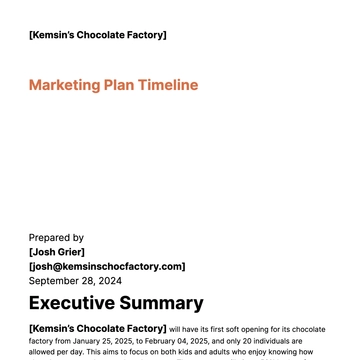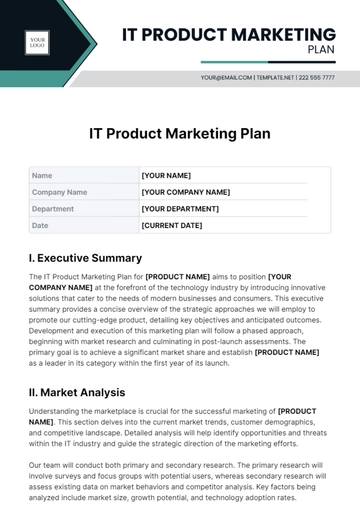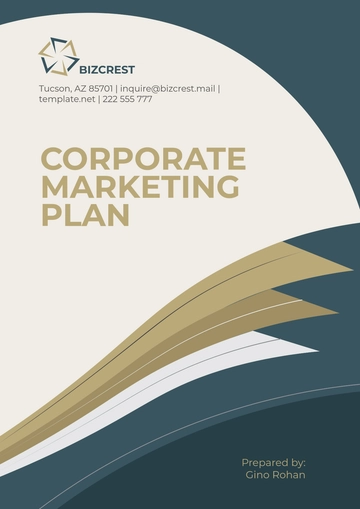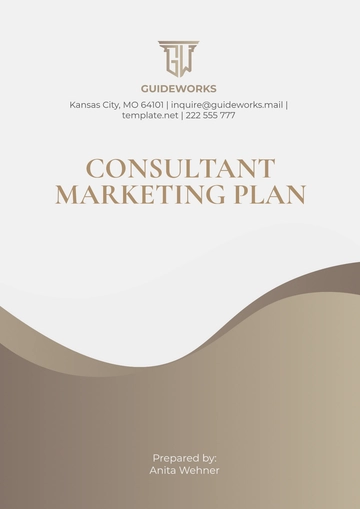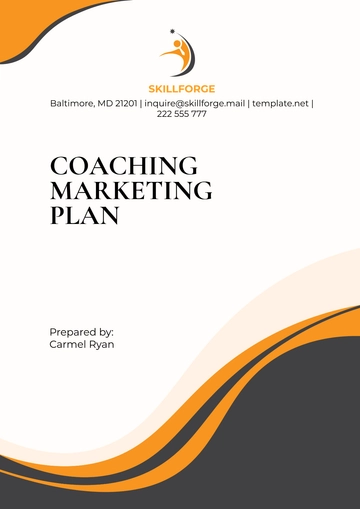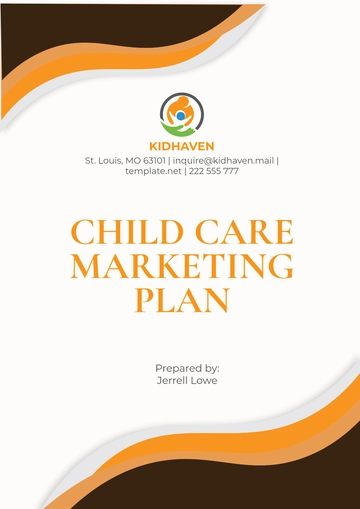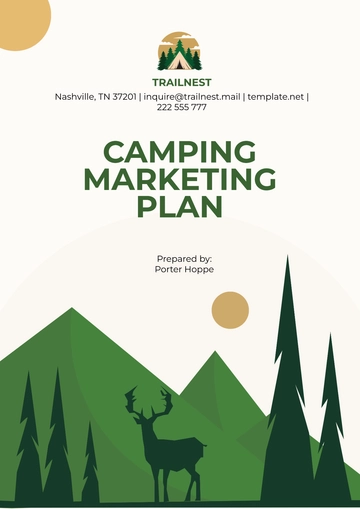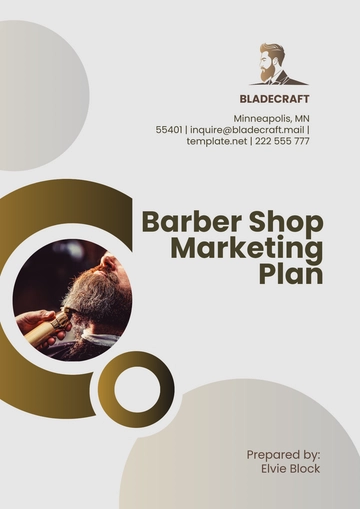Free Online Learning Marketing Plan
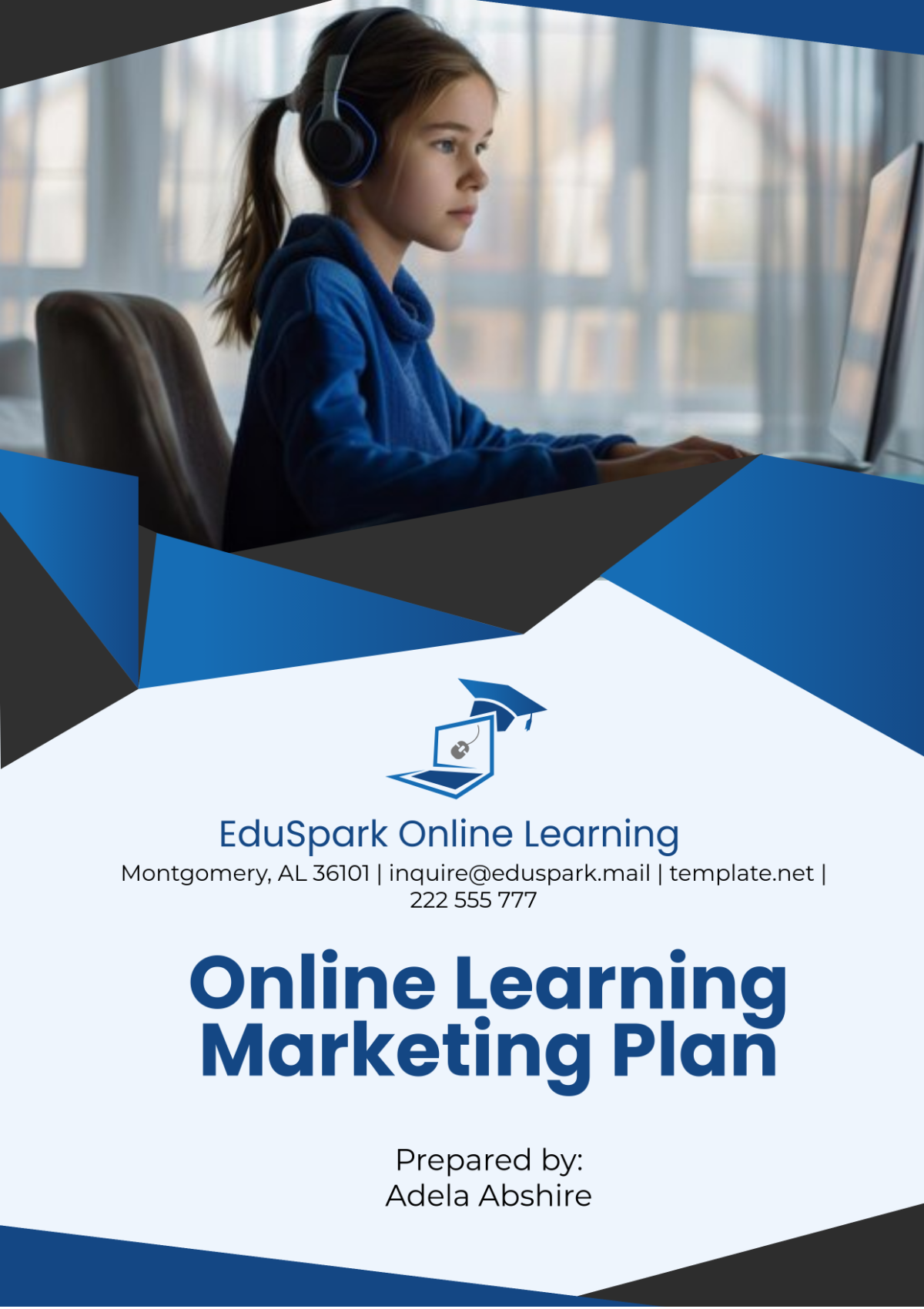
I. Executive Summary
A. Purpose of the Marketing Plan
The purpose of this marketing plan is to outline the comprehensive strategies and actionable steps that [Your Company Name] will implement to promote its innovative online learning platform. The global online education market is projected to exceed [$400 billion] by the year 2050, fueled by the increasing demand for flexibility, accessibility, and tailored learning experiences. This growth presents a significant opportunity for [Your Company Name] to establish a strong foothold in this competitive sector. This plan aims to not only increase brand awareness but also to attract a more extensive and diverse student base while expanding into new markets over the next five years.
B. Target Market
[Your Company Name] targets learners from diverse age groups and backgrounds, making our educational offerings relevant across a broad spectrum of society. Our primary segments include:
Young Professionals:
This group, typically aged [22-35], is often looking to upgrade their skills in fast-evolving fields such as digital marketing, information technology, and data analysis. They value flexible learning that can fit around their busy work schedules and offer practical applications.College Students:
Aged [18-24], these students seek supplemental learning resources to enhance their academic experience and improve job readiness. Many are looking for additional certifications that can distinguish them in the job market.Corporate Clients:
Companies aim to upskill their employees to keep pace with industry changes. This segment requires tailored corporate training solutions that can be customized to meet specific business needs and align with organizational goals.Lifelong Learners:
This diverse group of individuals, often aged [35-60], is interested in personal and professional development through self-paced courses on a wide variety of topics, ranging from creative writing to advanced analytics.
C. Goals and Objectives
By the year 2055, [Your Company Name] has set ambitious key objectives, aimed at achieving significant milestones that will contribute to our growth and sustainability in the online learning market:
Increase Enrollment:
To increase the number of enrolled students by [100,000], targeting diverse demographics and creating course offerings that meet their unique needs.Revenue Growth:
Achieve an annual revenue growth of [$20 million] by the year 2055 through a combination of course enrollments, partnerships, and corporate training programs.Market Expansion:
Successfully penetrate new international markets, specifically focusing on Europe, Asia, and South America, leveraging localized marketing strategies and partnerships with local educational institutions.Enhance Brand Visibility:
Enhance brand visibility through strategic partnerships, digital marketing campaigns, and collaborations with influential figures in the education and professional development sectors.
II. Market Research
A. Industry Overview
The global shift towards online learning has gained unprecedented momentum over the past decade, driven by advancements in technology, improved internet access, and the increasing demand for flexible learning solutions. By 2050, it's anticipated that over [1.5 billion] people will engage in online courses, making it a lucrative market for businesses like [Your Company Name]. According to industry research, online learning is becoming a preferred choice for many learners due to its convenience, variety, and cost-effectiveness. This trend highlights the necessity for educational platforms to evolve continuously and innovate to meet user expectations.
B. Competitor Analysis
To successfully penetrate the online learning market, it is essential to analyze the competitive landscape. Key competitors include platforms such as [Company A], [Company B], and [Company C]. Below is a comparative analysis of their strengths and weaknesses:
Competitor | Strengths | Weaknesses |
|---|---|---|
[Company A] | Established brand with a loyal customer base, vast course catalog that covers a wide range of subjects, and robust certification options. | Expensive subscription plans that can deter price-sensitive customers and a complex navigation interface that may frustrate users. |
[Company B] | Affordable pricing, strong user-friendly interface that enhances the learning experience, and a focus on practical skills training. | Limited advanced professional courses, which may lead to student attrition as learners progress in their careers. |
[Company C] | Strong corporate partnerships that boost their market presence and allow for customized learning solutions for businesses. | Limited global reach, primarily focusing on North America and Europe, which may hinder their ability to capture emerging markets. |
C. SWOT Analysis
Strengths:
Diverse Course Catalog: [Your Company Name] offers a wide range of courses that cater to various interests and skill levels, ensuring that learners can find relevant content for their educational needs.
Flexible Learning Formats: We provide multiple learning formats including self-paced, live instructor-led sessions, and hybrid models that combine both. This flexibility is vital for accommodating different learning preferences and schedules.
Strong Faculty: Our instructors are industry professionals and subject-matter experts who bring real-world experience to their courses, enhancing the learning experience and providing practical insights.
Weaknesses:
Limited Awareness in Key International Markets: While we have a strong presence domestically, our brand recognition is lower in certain international markets, making it essential to focus on targeted marketing efforts.
High Dependence on Digital Marketing: Our current marketing strategy relies heavily on digital channels, which can limit outreach to non-digital audiences, potentially excluding valuable demographics.
Opportunities:
Expansion into Underserved Markets: Emerging economies are increasingly recognizing the value of online education. There is a significant opportunity for [Your Company Name] to expand into these regions, where demand for online learning is growing rapidly.
Growing Demand for Skills-Based Learning: The rise of automation and technological changes in the workforce has created a strong demand for skills-based learning programs, presenting an opportunity for [Your Company Name] to develop specialized courses.
Threats:
Increased Competition: The online learning market is becoming saturated with new entrants and established players, which may lead to price wars and increased marketing costs.
Changes in Educational Regulations: Evolving regulations around online education could impose restrictions on certification programs and course offerings, potentially impacting our business model.
III. Marketing Strategy
A. Target Audience Segmentation
Our marketing strategy will address the following audience segments in detail:
Students (ages 18-25):
Primarily college students who are either looking for additional resources to help them succeed in their studies or are seeking alternative certifications that can enhance their employability. Marketing efforts will focus on social media platforms popular among this demographic, such as Instagram and TikTok, where engaging content can showcase the benefits of our courses.Working Professionals (ages 25-45):
This group is increasingly focused on professional development, often looking to reskill or upskill to keep pace with industry demands. Our campaigns will highlight success stories from alumni who have leveraged our courses for career advancement, particularly on platforms like LinkedIn, which is frequented by professionals.Corporations:
B2B marketing efforts targeting HR departments and corporate training managers will be emphasized. We will showcase the benefits of customized training solutions and the measurable impact of employee development programs on organizational performance.Lifelong Learners (ages 35-60):
This diverse group is interested in personal and professional development. Marketing strategies will focus on the benefits of lifelong learning, emphasizing courses that cater to hobbies, personal interests, or career enhancement.
B. Unique Selling Proposition (USP)
The key differentiator for [Your Company Name] is the focus on flexible learning solutions that combine industry-aligned curricula with expert instructors and real-world applications. Additionally, we offer personalized learning paths that allow students to tailor their educational experiences based on their goals and career aspirations. Our courses are designed not only to deliver knowledge but also to equip learners with practical skills that can be immediately applied in their professional lives.
C. Branding and Positioning
To position [Your Company Name] as a leader in online education, our messaging will highlight:
Innovation:
Our platform incorporates the latest technology and pedagogical research to create a dynamic learning environment that caters to modern learners.Reputation:
We will focus on the qualifications and real-world experiences of our instructors, highlighting their success stories and testimonials to build trust and credibility.Global Reach:
With courses available in multiple languages and designed to meet the educational standards of various countries, we aim to position ourselves as a truly global educational provider.
IV. Digital Marketing Strategy
A. SEO (Search Engine Optimization)
A strong SEO strategy will be fundamental to driving organic traffic to [Your Company Name]'s platform. Key actions include:
On-Page Optimization:
All course pages will be meticulously optimized for relevant keywords that potential learners are likely to search for, such as "online courses 2050" and "best online learning platforms." Meta descriptions, alt texts, and header tags will be carefully crafted to enhance visibility on search engines.Content Marketing:
We will regularly publish blogs and articles that address emerging educational trends, practical tips for career advancement, and inspiring success stories from our alumni. This approach will not only drive traffic but also establish [Your Company Name] as a thought leader in the online education space.Backlink Strategy:
Developing partnerships with educational influencers and reputable blogs will improve our domain authority and drive referral traffic to our site. We will create valuable content that these partners can share, enhancing our online presence.
SEO Metrics | Baseline (2050) | Target (2051) |
|---|---|---|
Organic Traffic (per month) | [50,000] | [150,000] |
Keyword Ranking (Top 3) | [10] | [50] |
Backlinks | [500] | [2,000] |
B. Social Media Marketing
[Your Company Name] will leverage social media platforms to build a strong online presence and engage with our target audience. Our approach will include:
LinkedIn:
Targeting professionals and corporate clients through sponsored content and thought leadership posts. Regular updates about new courses, industry insights, and success stories will be shared to attract engagement.Instagram and TikTok:
For younger audiences, we will create visual and short-form content that highlights student experiences, course offerings, and key learning moments. Engaging stories and reels will showcase the vibrant community and interactive nature of our courses.YouTube:
Offering free educational content, webinars, and teaser courses will not only serve as value additions for our audience but will also act as a funnel to convert viewers into enrolled students. Regular video content will keep the audience engaged and informed about industry trends.
Platform | Current Followers (2050) | Target Followers (2051) |
|---|---|---|
[25,000] | [100,000] | |
[10,000] | [50,000] | |
YouTube | [5,000] | [30,000] |
C. Paid Advertising (PPC)
Our paid advertising strategy will include targeted campaigns designed to maximize return on investment (ROI):
Google Ads:
We will implement search and display ads targeting high-intent keywords such as "online certification" and "e-learning for professionals." Regular monitoring and optimization will ensure that our ads reach the most relevant audience.Facebook and Instagram Ads:
Targeted ads will be created based on user interests, educational background, and behaviors related to online learning. A/B testing will be employed to refine ad creatives and messaging.LinkedIn Ads:
For corporate clients, we will promote bulk course purchases and partnerships. Ads will be tailored to resonate with HR and corporate training departments, emphasizing the benefits of our customized learning solutions.
Platform | Current Spend (per month) | Target Spend (per month) |
|---|---|---|
Google Ads | [$50,000] | [$100,000] |
Facebook & Instagram | [$30,000] | [$70,000] |
[$20,000] | [$50,000] |
V. Content Marketing Strategy
A. Blog and Resource Center
To increase organic traffic and demonstrate industry leadership, [Your Company Name] will create a content hub. This will feature:
In-depth Articles:
Comprehensive articles on education trends, workforce shifts, and the future of learning will be published regularly. These articles will be data-driven, providing readers with valuable insights and actionable advice.Case Studies:
Showcasing successful alumni who have benefited from our courses will serve as powerful testimonials to potential students. These case studies will highlight their journey, the skills they acquired, and the impact on their careers.Video Tutorials and Webinars:
We will offer free educational content through video tutorials and webinars, which not only provide value but also serve as a promotional tool for our paid courses. Engaging content will encourage viewers to explore further educational opportunities with us.
B. Course Reviews and Testimonials
To build trust and credibility, reviews and testimonials from satisfied students will be actively encouraged. We will implement a systematic process for gathering feedback, including:
Surveys:
Post-course surveys will be distributed to gauge student satisfaction and areas for improvement. These insights will be invaluable for course development and marketing strategies.User-Generated Content:
Encouraging students to share their experiences on social media and review platforms will create authentic content that we can repurpose for ads and website content. Positive reviews can significantly influence prospective students' decisions.Video Testimonials:
Short video testimonials from alumni will be featured on our website and social media channels. These personal stories will resonate with potential learners and serve as compelling evidence of our impact.
VI. Partnership and Collaboration Strategy
A. Educational Partnerships
To enhance our offerings and credibility, [Your Company Name] will forge partnerships with universities and colleges globally. This strategy will involve:
Supplemental Educational Tools:
Our platform will be offered as a resource for traditional institutions, allowing students to access additional content that complements their formal education.Co-branded Certification Programs:
Collaborating with established institutions to create joint certification programs will provide added value to our courses and attract students seeking recognized credentials.Joint Webinars and Workshops:
Hosting events in collaboration with educational institutions will enhance our visibility and demonstrate our commitment to providing high-quality educational experiences.
B. Corporate Partnerships
The B2B segment will involve working directly with corporations to create customized learning paths for employee development programs. Key actions will include:
Customized Training Solutions:
We will offer tailored training programs that address specific skills gaps within organizations, ensuring that our courses align with their business objectives.Bulk Enrollment Discounts:
Corporations that enroll multiple employees will benefit from bulk discounts, making our courses an attractive option for large organizations looking to invest in employee development.Enterprise Portal:
Developing a dedicated enterprise portal will allow businesses to manage large-scale training initiatives easily. Features such as progress tracking, reporting, and customizable content will enhance the user experience for corporate clients.
VII. Budget Allocation
Below is an overview of the estimated annual budget, detailing the strategic investments that [Your Company Name] will make to support its marketing initiatives:
Category | Budget Allocation ($) | Justification |
|---|---|---|
SEO and Content Marketing | [$500,000] | Investment in high-quality content creation, SEO tools, and ongoing optimization efforts to drive organic traffic. |
Paid Advertising (PPC) | [$1,200,000] | Targeted ads across various platforms to maximize reach and enrollments, including Google Ads and social media campaigns. |
Social Media Campaigns | [$300,000] | Engagement and growth on social platforms, focusing on targeted content for each demographic. |
Partnerships and Collaborations | [$400,000] | Resources allocated for establishing and nurturing partnerships with educational institutions and corporate clients. |
Webinars and Events | [$200,000] | Hosting events, workshops, and webinars to showcase expertise, engage potential students, and build community. |
Total | [$2,600,000] | Overall budget to ensure comprehensive marketing strategies are implemented effectively across all channels. |
VIII. Monitoring and Evaluation
A. Key Performance Indicators (KPIs)
To ensure the success of the marketing efforts, the following KPIs will be tracked:
Student Enrollment Growth:
Tracking the number of new enrollments per month and overall course completion rates is crucial. This data will help us understand the effectiveness of our marketing strategies and make necessary adjustments.Revenue:
Monitoring monthly and yearly revenue will ensure that we meet our projected growth targets. Analyzing revenue by course type, demographic, and region will provide insights into our most profitable areas.Website Traffic:
The increase in both organic and paid traffic will be monitored through tools like Google Analytics. Regular reports will highlight traffic sources, user behavior, and conversion rates.Conversion Rates:
Assessing how well our landing pages, emails, and advertisements are converting traffic into paying customers will provide insights into the effectiveness of our marketing strategies.
B. Reporting
Monthly reports will be generated to assess the performance of each marketing channel. A comprehensive quarterly review will allow for re-allocation of resources if necessary, ensuring that underperforming strategies are improved or replaced. These reports will include:
Performance Summaries:
Overviews of marketing activities, enrollment numbers, and revenue generated, accompanied by data visualizations for clarity.Actionable Insights:
Recommendations for adjustments based on data analysis, such as refining target demographics or reallocating budgets to higher-performing channels.Trend Analysis:
Identifying patterns in student enrollment, website traffic, and social media engagement to predict future performance and inform strategic planning.
IX. Future Considerations
As [Your Company Name] continues to grow, future marketing strategies should include:
AI-Powered Personalization:
Implementing AI-driven tools to offer personalized course recommendations based on user behavior will enhance user engagement and satisfaction. This level of personalization can significantly improve course completion rates and student retention.VR/AR Integration:
Developing virtual and augmented reality learning experiences, particularly for industries like healthcare, engineering, and design, can create immersive educational environments. This technology will differentiate our offerings and attract tech-savvy learners.Global Expansion:
Focused marketing campaigns to enter emerging markets where online education demand is rising, such as in Africa and Southeast Asia, will broaden our reach. Establishing local partnerships and adapting our offerings to meet cultural and educational needs will be essential.Continuous Innovation:
Staying ahead of educational trends, such as micro-credentials and competency-based education, will ensure that [Your Company Name] remains relevant in a rapidly changing market. Regularly revisiting our course offerings and leveraging emerging technologies will be critical for sustained success.
- 100% Customizable, free editor
- Access 1 Million+ Templates, photo’s & graphics
- Download or share as a template
- Click and replace photos, graphics, text, backgrounds
- Resize, crop, AI write & more
- Access advanced editor
Boost your enrollment with the Online Learning Marketing Plan Template from Template.net. This editable and customizable template helps you craft strategies to promote your online courses and engage your target audience. Tailor it using our Ai Editor Tool for an effective, results-driven marketing approach.

